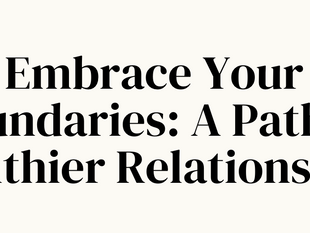
Unlock Your Communication Superpowers: Master Assertiveness and Transform Your Relationships!
0
5
0

In today's fast-paced world, effective communication is more important than ever. Whether in personal relationships or professional settings, the ability to express oneself clearly and confidently can pave the way for success and fulfillment. Here are some insights and strategies to help you find your voice and communicate more effectively.
The Power of Assertive Communication
Assertiveness isn't just a the cornerstone of communication. It's the culmination of the power trio and the 3 C's to success: communication, confidence and courage. Assertiveness is the state of being able to take decisive action, tackle challenges, foster trust, and resilience without losing sight of who you are. It's what makes you a power house.
It involves both clarity and empathy, allowing for constructive dialogue and collaboration. Here are some techniques to enhance your assertive communication skills:
Use “I” Statements: Express your feelings and needs by focusing on your perspective. For example, "I feel overwhelmed when deadlines are tight, and I’d appreciate more time."
Reduce Filler Words: Words like "um," "like," and "just" can undermine your message. Practice speaking with intention and clarity.
Empathetic Assertion: Acknowledge others’ feelings while asserting your own. For instance, "I understand you’re dealing with a lot, and I want to support you. However, I need some time for myself to feel balanced."
Set Boundaries: Clearly communicate your limits, such as, "I appreciate your input, but I need some time to think through my ideas alone."
Embracing Positive Inner Dialogue
Our inner dialogue also needs to be assertive, as it greatly influences our confidence and emotional wellbeing and provides internal validation. Negative self-talk can trigger stress responses, while positive affirmations can foster resilience and calm. Here are key concepts to consider:
Physiological Impacts: Positive self-talk can reduce heart rate, encourage deeper breathing, and relax muscles, promoting a sense of calm and readiness.
Internal vs. External Validation: Building self-worth through internal validation leads to lasting confidence, whereas relying solely on external validation may result in temporary self-esteem boosts.

Active Listening: The Key to Connection
We need to listen twice as much as we talk. Assertive people are also active listeners, engaging fully with the speaker through verbal and non-verbal cues, observing tone of voice, inflection, and emotion. It's the reading between the lines that builds genuine connection. This practice builds trust and strengthens relationships. Techniques include:
Avoid Interruptions: Allow the speaker to finish before responding, using silence as a tool for reflection.
Ask Clarifying Questions: Show genuine interest by seeking to understand the speaker's perspective more deeply.
Provide Feedback: Summarize or paraphrase what you've heard to confirm understanding and demonstrate attentiveness.
Overcoming Communication Pitfalls
Miscommunication is a given. We are human. The goal is not to avoid it completely, but instead enhance our awareness to create opportunities for resolution. Awareness of common communication pitfalls can help you navigate misunderstandings and foster more meaningful interactions:
Avoid Overgeneralization: Instead of saying, "I never do anything right," reframe it to, "Sometimes, I struggle, but I learn from those experiences."
Limit Emotional Triggers: Be mindful of your emotional responses to maintain clarity and objectivity in conversations.
Reduce Excessive Apologies: Frequent apologies can undermine your message and confidence. Be assertive and direct in your communication.
By embracing these strategies, you can find your voice and navigate the complexities of communication with confidence and empathy. Remember, effective communication is not just about speaking but also about listening and understanding. Practice these skills to build stronger connections and achieve your personal and professional goals.
.png)




